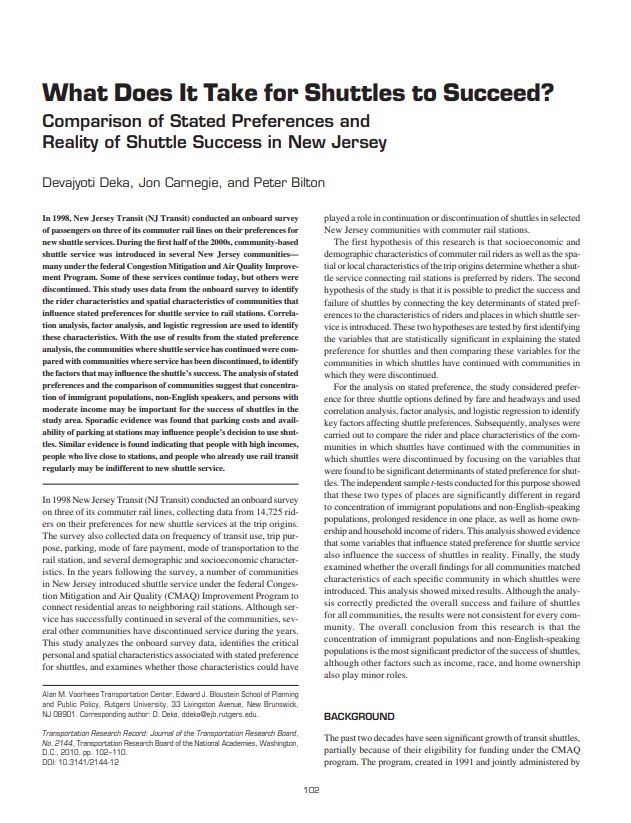Abstract
In 1998, New Jersey Transit (NJ Transit) conducted an onboard survey of passengers on three of its commuter rail lines on their preferences for new shuttle services. During the first half of the 2000s, community-based shuttle service was introduced in several New Jersey communities—many under the federal Congestion Mitigation and Air Quality Improvement Program. Some of these services continue today, but others were discontinued. This study uses data from the onboard survey to identify the rider characteristics and spatial characteristics of communities that influence stated preferences for shuttle service to rail stations. Correlation analysis, factor analysis, and logistic regression are used to identify these characteristics. With the use of results from the stated preference analysis, the communities where shuttle service has continued were compared with communities where service has been discontinued, to identify the factors that may influence the shuttle’s success. The analysis of stated preferences and the comparison of communities suggest that concentration of immigrant populations, non-English speakers, and persons with moderate income may be important for the success of shuttles in the study area. Sporadic evidence was found that parking costs and availability of parking at stations may influence people’s decision to use shuttles. Similar evidence is found indicating that people with high incomes, people who live close to stations, and people who already use rail transit regularly may be indifferent to new shuttle service.
